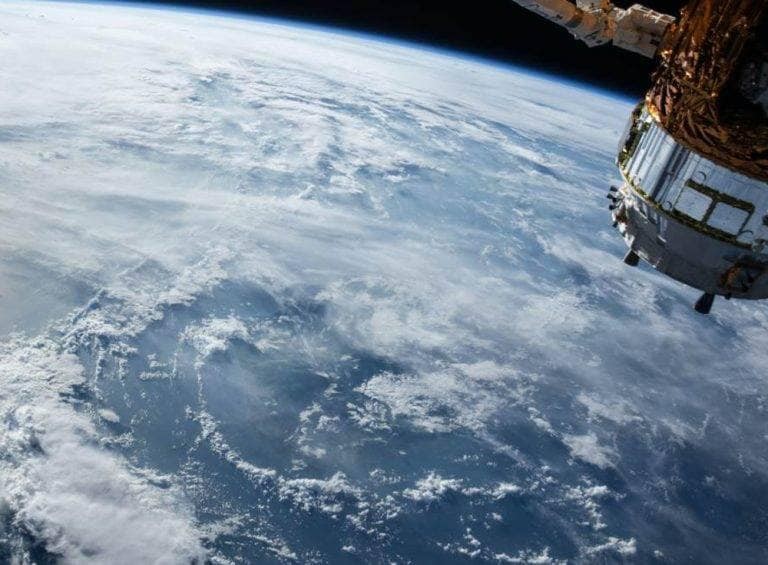PRONOSTICAN QUE EL 6 DE JUNIO PASARÁ UN ENORME ASTEROIDE JUNTO A LA TIERRA
Miércoles 03 Junio 2020
Los expertos externaron que aunque el asteroide es clasificado como “muy pequeño” puede presentar un riesgo que pase tan cerca del planeta.

<div style="color: #1c1e21; font-family: inherit; font-size: 14px; font-variant-numeric: normal; font-variant-east-asian: normal; white-space: pre-wrap;" data-offset-key="ivpm-0-0" data-block="true" data-editor="d3a6q"> </div>
<div style="color: #1c1e21; font-family: inherit; font-size: 14px; font-variant-numeric: normal; font-variant-east-asian: normal; white-space: pre-wrap;" data-offset-key="a0u96-0-0" data-block="true" data-editor="d3a6q"> </div>
<div style="color: #1c1e21; font-family: inherit; font-size: 14px; font-variant-numeric: normal; font-variant-east-asian: normal; white-space: pre-wrap;" data-offset-key="ejqgb-0-0" data-block="true" data-editor="d3a6q">
<div class="_1mf _1mj" style="direction: ltr; font-family: inherit; position: relative;" data-offset-key="ejqgb-0-0"><span style="font-family: inherit;" data-offset-key="ejqgb-0-0">ESTADOS UNIDOS.- El 2020 no deja de sorprendernos y es que ahora la NASA pronosticó que el 6 de junio pasará un enorme asteroide junto a la tierra.</span></div>
</div>
<div style="color: #1c1e21; font-family: inherit; font-size: 14px; font-variant-numeric: normal; font-variant-east-asian: normal; white-space: pre-wrap;" data-offset-key="fvhik-0-0" data-block="true" data-editor="d3a6q">
<div class="_1mf _1mj" style="direction: ltr; font-family: inherit; position: relative;" data-offset-key="fvhik-0-0"><span style="font-family: inherit;" data-offset-key="fvhik-0-0"> </span></div>
</div>
<div style="color: #1c1e21; font-family: inherit; font-size: 14px; font-variant-numeric: normal; font-variant-east-asian: normal; white-space: pre-wrap;" data-offset-key="8gvcc-0-0" data-block="true" data-editor="d3a6q">
<div class="_1mf _1mj" style="direction: ltr; font-family: inherit; position: relative;" data-offset-key="8gvcc-0-0"><span style="font-family: inherit;" data-offset-key="8gvcc-0-0">Para darse una idea de su tamaño se puede decir que es incluso más grande que el edificio Empire State que mide 381 metros.</span></div>
</div>
<div style="color: #1c1e21; font-family: inherit; font-size: 14px; font-variant-numeric: normal; font-variant-east-asian: normal; white-space: pre-wrap;" data-offset-key="524kq-0-0" data-block="true" data-editor="d3a6q">
<div class="_1mf _1mj" style="direction: ltr; font-family: inherit; position: relative;" data-offset-key="524kq-0-0"><span style="font-family: inherit;" data-offset-key="524kq-0-0"> </span></div>
</div>
<div style="color: #1c1e21; font-family: inherit; font-size: 14px; font-variant-numeric: normal; font-variant-east-asian: normal; white-space: pre-wrap;" data-offset-key="flu78-0-0" data-block="true" data-editor="d3a6q">
<div class="_1mf _1mj" style="direction: ltr; font-family: inherit; position: relative;" data-offset-key="flu78-0-0"><span style="font-family: inherit;" data-offset-key="flu78-0-0">Los expertos externaron que aunque el asteroide es clasificado como “muy pequeño” puede presentar un riesgo que pase tan cerca del planeta.</span></div>
</div>
<div style="color: #1c1e21; font-family: inherit; font-size: 14px; font-variant-numeric: normal; font-variant-east-asian: normal; white-space: pre-wrap;" data-offset-key="9ditm-0-0" data-block="true" data-editor="d3a6q">
<div class="_1mf _1mj" style="direction: ltr; font-family: inherit; position: relative;" data-offset-key="9ditm-0-0"><span style="font-family: inherit;" data-offset-key="9ditm-0-0"> </span></div>
</div>
<div style="color: #1c1e21; font-family: inherit; font-size: 14px; font-variant-numeric: normal; font-variant-east-asian: normal; white-space: pre-wrap;" data-offset-key="72d7c-0-0" data-block="true" data-editor="d3a6q">
<div class="_1mf _1mj" style="direction: ltr; font-family: inherit; position: relative;" data-offset-key="72d7c-0-0"><span style="font-family: inherit;" data-offset-key="72d7c-0-0">El objeto conocido como 163348 (2002 NN4) pasará a más de 5 millones de kilómetros de nuestro planeta a una velocidad de 11 mil 146 kilómetros por hora el próximo sábado 6 de junio de 2020.</span></div>
</div>
<div style="color: #1c1e21; font-family: inherit; font-size: 14px; font-variant-numeric: normal; font-variant-east-asian: normal; white-space: pre-wrap;" data-offset-key="f6ieu-0-0" data-block="true" data-editor="d3a6q">
<div class="_1mf _1mj" style="direction: ltr; font-family: inherit; position: relative;" data-offset-key="f6ieu-0-0"><span style="font-family: inherit;" data-offset-key="f6ieu-0-0"> </span></div>
</div>
<div style="color: #1c1e21; font-family: inherit; font-size: 14px; font-variant-numeric: normal; font-variant-east-asian: normal; white-space: pre-wrap;" data-offset-key="6cdm2-0-0" data-block="true" data-editor="d3a6q">
<div class="_1mf _1mj" style="direction: ltr; font-family: inherit; position: relative;" data-offset-key="6cdm2-0-0"><span style="font-family: inherit;" data-offset-key="6cdm2-0-0">Los especialistas creen que este objeto tiene una órbita alrededor del sol, la cual recorre completamente cada 300 días, en tanto que da una vuelta sobre su eje cada 14.5 días.</span></div>
</div>
<div style="color: #1c1e21; font-family: inherit; font-size: 14px; font-variant-numeric: normal; font-variant-east-asian: normal; white-space: pre-wrap;" data-offset-key="clv8j-0-0" data-block="true" data-editor="d3a6q">
<div class="_1mf _1mj" style="direction: ltr; font-family: inherit; position: relative;" data-offset-key="clv8j-0-0"><span style="font-family: inherit;" data-offset-key="clv8j-0-0"> </span></div>
</div>
<div style="color: #1c1e21; font-family: inherit; font-size: 14px; font-variant-numeric: normal; font-variant-east-asian: normal; white-space: pre-wrap;" data-offset-key="ahfk6-0-0" data-block="true" data-editor="d3a6q">
<div class="_1mf _1mj" style="direction: ltr; font-family: inherit; position: relative;" data-offset-key="ahfk6-0-0"><span style="font-family: inherit;" data-offset-key="ahfk6-0-0">Los científicos predicen que habrá alrededor de 30 “acercamientos” a la Tierra de diversos asteroides en el futuro cercano.</span></div>
</div>


